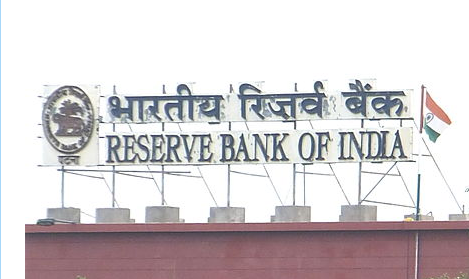Bad Bank & Associated Issues
What is a Non-Performing Asset?
- A Non-Performing Asset (NPA) is a loan or advance for which the principal or interest payment remains overdue for a period of 90 days.
- They are also referred to as ‘bad loans’.
- Banks are required to classify NPAs further into :
- Substandard NPAs: Assets which have remained NPA for a period less than or equal to 12 months.
- Doubtful NPAs: An asset would be classified as doubtful if it has remained in the substandard category for a period of 12 months.
- Loss NPAs: As per RBI, ” Loss asset is considered uncollectible and of such little value that its continuance as a bankable asset is not warranted, although there may be some salvage or recovery value.”
The problem of NPAs and it’s effects
- Indian banks’ pile of bad loans is a huge drag on the economy.
- It is a drain on banks’ profits. Because profits are eroded, public sector banks (PSBs), where the bulk of the bad loans reside, cannot raise enough capital to fund credit growth.
- Lack of credit growth, in turn, comes in the way of the economy’s return to an 8 percent growth trajectory.
How banks deal with NPAs?
Once an asset is recognized as a Non-Performing Asset (NPA), banks must decide what to do with it. They have various options with them:
- They can try to seize the assets pledged by the borrower and sell them.
BUT, this involves large losses on loans as the assets have to be sold at steep discounts to their book value.
2. Under the RBIs Strategic Debt Restructuring (SDR) scheme, banks can convert their loans into equity, acquire a majority stake in the firm, dislodge the promoters and management and bring in new ones.
BUT, Indian banks do not have the experience in running businesses till such time as new promoters are found. Nor do they have experience in locating promoters and management who can take over the stressed assets.
3. Banks can restructure the loans so that borrowers are able to service them. This involves stretching out the period of payment, or waiving a portion of the loans, or reducing the interest rate on loans, or some combination of these.
BUT, in any restructuring banks incur losses on the loans they have made. At PSBs, managers are open to the charge that they have favored borrowers in a restructuring scheme and can invite action from the investigative agencies.
4. Banks can sell the NPA at a discount to an Asset Restructuring Company. It has the effect of getting an NPA off the books of the bank or ‘cleaning up the balance sheet’. Since 100 percent of the loan has exited the balance sheet, the ration of regulatory capital to assets- or what is called ‘capital adequacy‘-improves. The bank now looks more attractive to investors.
BUT, this involves a significant loss on loans when the transaction is made. The bank’s capital is eroded to the extent of the loss.
The proposal for a ‘Bad Bank’
- The Bad Bank proposal is a variant of the fourth option.
- The idea is to transfer NPAs of banks, perhaps only PSBs, to the bad bank.
- The bad bank will manage these NPAs in suitable ways- liquidating, restructuring etc.
- A bad bank will be better focused on the task of recovery.
Merits of a bad bank
- Getting NPAs off the books will help the PSB management focus on new business instead of having to expend their energies on trying to effect recoveries.
- It it is a private entity, it can also bring in superior expertise.
- A big motivation to float the idea of a bad bank would be to dress up the PSBs by getting rid of their bad loans. Then, private capital can be attracted to them, perhaps through the sale of small stakes to strategic investors.
- PSBs would also be able to access the equity markets for funds and would not be as dependent on the government for capital.
Issues with the bad bank concept
- Who will have the majority stake in the bad bank? Will it be the Government or private investors?
- If the Government has the majority stake:
- Given the size of NPAs at PSBs , the capital required by a bad bank for acquiring NPAs will be substantial. How will the Government get the required funds?
- A Government owned bad bank will be subject to the same constraints in managing bad loans as PSBs.
- Managing the sheer size and diversity of bad loans acquired from multiple PSBs will be a difficult task.
- A Government entity may not be able to pay specialists what it takes.
- A Government owned bad bank appears to be transferring the problem from one part of the Government to another.
- If a private entity has the majority stake:
These could be long-term investors like sovereign wealth funds and pension funds. In this case, the price at which PSB loans are sold to the bad bank could become a major issue. If the price is too high, the bad bank will not be viable. If it’s too low, PSBs will be accused of selling their loans too cheaply to private investors.
- A big chunk of NPAs at PSBs pertain to projects that are viable. These projects have not gone through to completion for reasons that are mostly extraneous to the project, such as problems in land acquisition or environmental clearance. With restructuring and additional funding, they can be completed and can create significant capacities.
—Selling these loans to a bad bank, on the other hand, would be a time consuming process. It would impede fresh flow of funds into these projects. Their debt would rise as the interest piles up.
— Former RBI Governor Raghuram Rajan had pointed out that bad banks were typically intended for situations where projects were not viable.
Way Ahead
- A way has to be found out in which the positives can be realized without creating a bad bank that itself requires too much capital and is too big to manage.
- One way may be to set up a bad bank to deal with NPAs at some of the weaker PSBs, instead of one that picks up NPAs from all PSBs.
- The concept would prove less controversial if the Government had a majority stake in it.
- The Government must infuse more capital into the better performing PSBs.
- It must also create, through an Act of Parliament, an apex Loan Resolution Authority for tackling bad loans at PSBs. The authority would vet restructuring of the bigger loans at PSBs. This would mitigate the paralysis that has set in at the PSBs because of the fear factor and get funds flowing into the stalled projects.
- Resolution of bad loans and restoring the health of the PSBs are among the biggest challenges the economy faces today, requiring response on multiple fronts. A bad bank cannot be the sole response.











